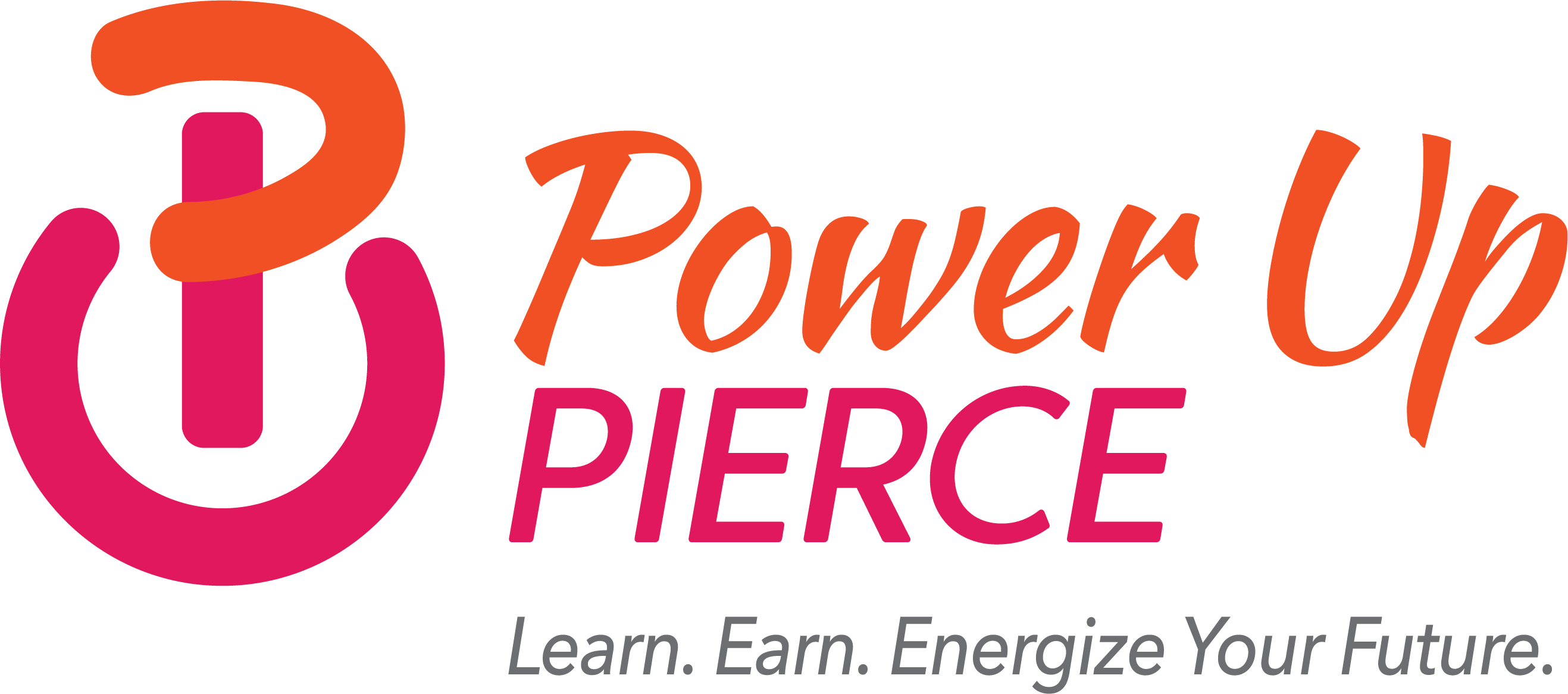
FOR IMMEDIATE RELEASE
CONTACT: CANDICE RUUD, 253.213.2960
TACOMA, Wash. – In Pierce County, too many young adults are falling through the cracks. And too many adults don’t know it’s not too late to graduate with their high school diploma or GED.
Enter Power Up Pierce, an initiative of the Pierce County Workforce Development Council (WDC) and WorkForce Central. This initiative grew out of our regional workforce strategic plan for 2019-2022, which features a couple of bold goals we’ve challenged ourselves to reach by 2025:
- By 2025, the workforce system will reduce the number of disconnected young adults, ages 16 to 24, by half — from 15,300 to 7,650.
- By 2025, the workforce system will reduce the number of residents between the ages of 25 to 64 without a high school diploma or equivalent by half — from 38,475 to 19,237.
Power Up Pierce was created to serve as the outreach campaign for our bold goals, and was developed with help and input from our MOU partners and service providers, because we know this is a job for the entire workforce system in Pierce County. To reach these goals, we’ll need help from Pierce County’s community colleges and trade schools, community-based organizations, educational institutions, workforce system partners, and employers and businesses.
Our partners at the new WorkSource center in Tacoma are laying the groundwork via outreach and recruitment efforts. Those case managers will serve as the face of Power Up Pierce, picking up the phone every time someone calls hoping to earn a better living or move up.
The idea is simple: We want to help adults learn about all their options for going back to school and beyond, and help young adults get connected to education or training that can set them on the path to their dream job.
The end result: Higher wages, better quality of life, more sustainable employment, and ultimately, greater economic vitality for all Pierce County residents.
- Read more about how we’re planning to reach our bold goals in Matt Driscoll’s column for The News Tribune.
- Visit the Power Up Pierce website and Facebook page.
WorkForce Central strengthens the Pierce County economy by identifying skill gaps between jobseekers and employment opportunities, fostering data-driven decision making, and connecting workforce development partners into a cohesive, collaborative and effective network.
###

